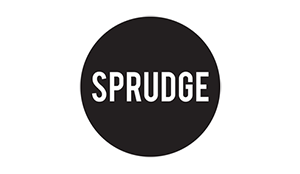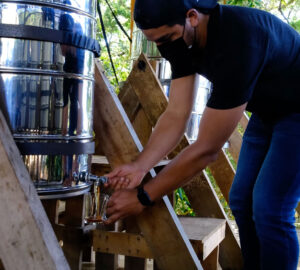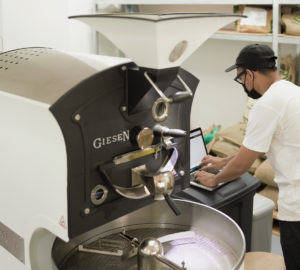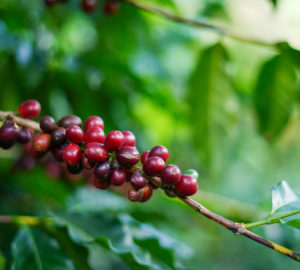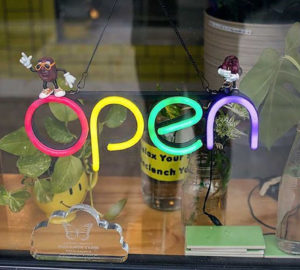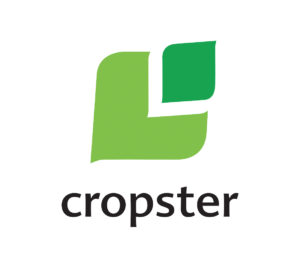Flour, made from coffee! Yes, flour you can bake with (though it’s best mixed with other flours) that is highly nutritious, only mildly caffeinated, and made from the coffee cherry pulp left over from green coffee processing. A crazy sounding idea to be sure, and something that got a number of news outlets quite excited when it was first launched last week. This is more than just the latest health-food craze though–Coffee Flour founder Dan Belliveau has big plans to reshape the environmental and economic impacts of the coffee supply chain.
Big plans with big backers, including Intellectual Ventures, the massive intellectual property and R&D firm founded by Nathan Myhrvold (co-creator of the landmark Modernist Cuisine), and industrial coffee supply chain heavyweight ECOM Agroindustrial Corp. Ltd and Mercon Coffee Group. We sat down with Belliveau to hear more about the Coffee Flour story.
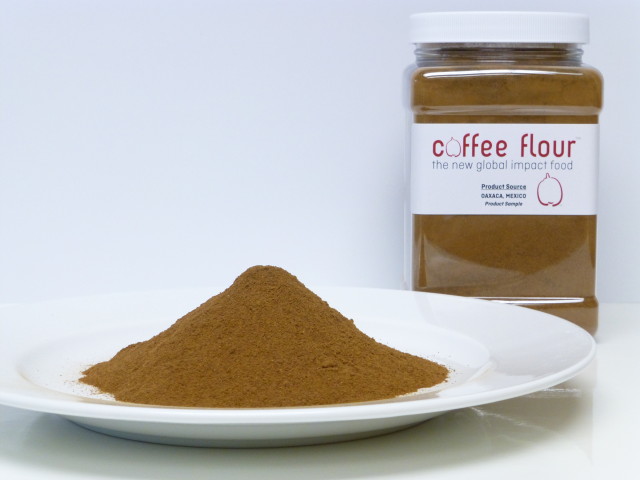
The high antioxidant, fiber, and protein flour is still being tweaked as it comes to market, but the fundamental supply, manufacturing and technology questions are settled. The technology itself is proprietary, and going through the patenting process currently, but Belliveau says that they are keeping the chemical composition of the end product as natural as it can be, with no other processing than the collection/drying/flour milling. However he said they’d be willing to consider doing additional processing, like perhaps decaffeination or changing the color, if customers ask for it.
Who is Coffee Flour?
Dan Belliveau is a talkative guy–we covered a lot of ground in our interview, starting with his training as an electrical engineer, and what he learned the hard way about affecting change while working at Starbucks Corporation. That’s where he met Ken Poppe, who now is the U.S. country head for the Invention Development Fund (IDF) at Intellectual Ventures. It is also where Belliveau first encountered what can be a quite entrenched resistance to change in the larger coffee industry.
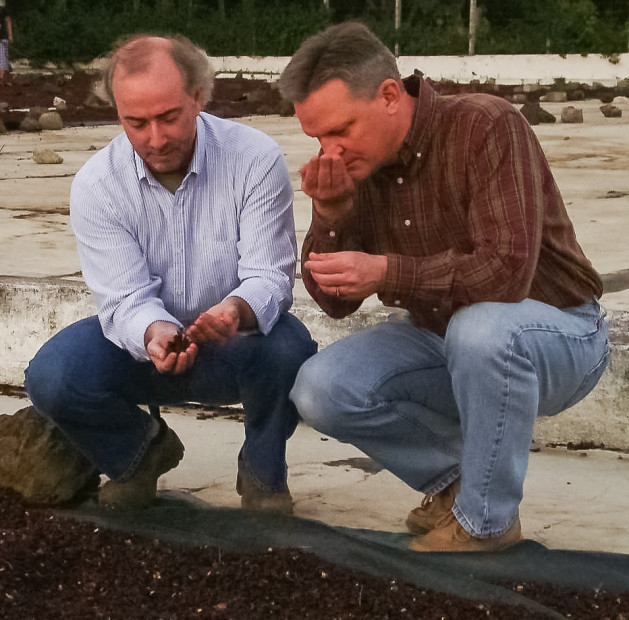
Belliveau spent his early engineering career working on robotics and automation for big manufacturers like General Motors and Frito-Lay. Coffee didn’t enter his consciousness until he followed a former manager to Starbucks in the mid-1990s. His first real exposure to coffee was during employee orientation when he rotated through the roles of barista and roaster. His job was to automate the Starbucks roasting facilities, but he kept being met with resistant people telling him: “you don’t know coffee.” During Belliveau’s first year there, Starbucks opened its first stores outside North America and by his second year of employment had more than doubled the number of stores it had worldwide.
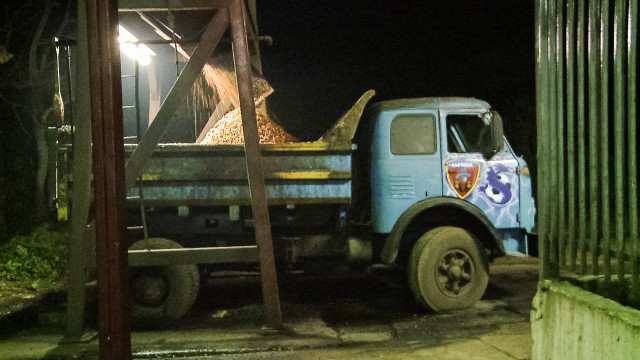
Belliveau says he learned valuable lessons about getting buy-in from bigger groups and more involvement when approaching change. Belliveau was, in fact, fired from Starbucks after failing to persuade senior management to invest in streamlining and automating existing facilities instead of rushing into building new facilities. He says “I’m not shy about saying it, when I was handed my hat and coat from Starbucks, I started NohBell a couple months after that departure.”
NohBell Corporation, a supply chain consulting company, started out doing just for-hire research and implementation work, before expanding into investing in its own incubation projects to try out ideas that might appeal to a broader market. The early research and development for Coffee Flour was one such project.
Why waste the waste?
It all started with Belliveau sitting in the office of a friend who’d recently purchased a coffee farm. This friend asked him and his colleague, another NohBell consultant with deep Starbucks experience, what to do with the “six acres of pulp” left over from processing their cherry.
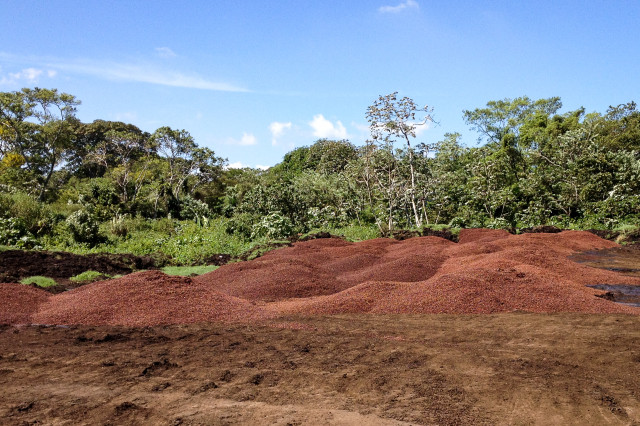
That’s a really good question when you consider that according to the USDA Coffee Report for Arabica green coffee, over 11 billion pounds of coffee were produced worldwide in 2013. A few reports suggest that waste from washed coffee processes weigh about 2.5 times that of the dried green bean. Based on the best research they could find, Belliveau’s team estimates that there is approximately a one-to-one ratio of dried cherry mucilage to dried bean.
From Belliveau’s trips to origin, he understood the impact this waste had on water in areas where coffee is milled. Some mills have tried to handle the stinking mounds and “honey water” left over from wet processing through catchment or composting. So far, these methods have made little lasting impact to reducing surface water contamination.
Thinking about these billions of pounds of polluting waste, Belliveau had an epiphany: “there was a wash of all of these years of different things and different processes and different manufacturing involved and I just thought, ‘What if we dried it and ground it up and made a food out of it?’”
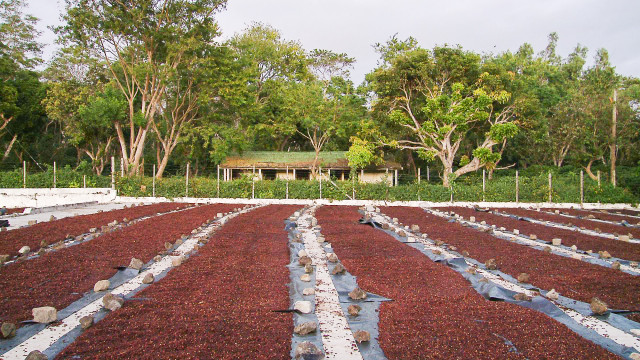
Turning a simple idea into a big venture:
It seemed like such a simple idea. Belliveau floated it first to a NohBell colleague, someone with 18 years’ experience as a green coffee buyer. “His response was, and I’m paraphrasing, ‘You’re nuts. I’ve never heard of this. I’ve never seen anything like this. It can’t be done. There’s gotta be a reason why no one’s doing it. Because that’s just too simple of a solution.’”
Belliveau put a team together at NohBell to investigate further. That work culminated in presenting the idea to Teddy Esteve, head of coffee trading for ECOM and Antonio Baltodano, chairman of the board for Mercon. According to Belliveau, “A two-hour meeting with Antonio Baltodano turned into a five-hour meeting. I was expecting him to say ‘You’re crazy because it’s already been done.’ I wasn’t expecting ‘You’re crazy.’ And ‘It’s never been done before.’”
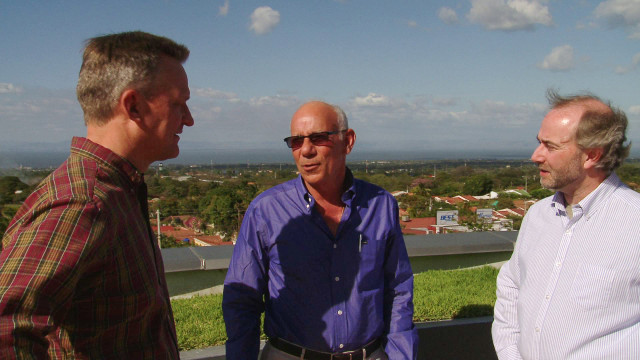
Esteve and Baltodano agreed to help Belliveau, starting with experimenting with the collection and drying of pulp at mills in Nicaragua, Guatemala, Mexico, and Vietnam. Much like when processing and drying coffee, Belliveau says that learing “how you collect the pulp once it’s separated from the bean and handle it from that moment to the moment in time that the drying process starts” was crucial in their development. “If that’s not done right, no matter what you do in drying, you’ve already lost it.”
As they got further in their experiments, the processing and equipment modifications they came up with, combined with the vision for making real systemic change, convinced them that this project was unique enough to need protection and more serious backing. Belliveau’s search for the expertise his team was missing started and ended with his former colleague, Ken Poppe at Intellectual Ventures: “I needed someone who knew patents. I needed someone who had scientific background. I wasn’t thinking I’d find it all in one company. I needed laboratories. I needed a chef, someone to bring it beyond what we could do in our home kitchen.”
Belliveau’s vision for what this product could mean for coffee farmers and millers evolved as new partners entered the arrangement. To him, getting patents was a key part of protecting that long-term vision. So was articulating the business values of the Coffee Flour vision to safeguard it beyond his involvement as CEO. He explained the importance of building transparency into arrangements with his supply partners: “In our contracts with ECOM and Mercon, it’s stated that there are revenues going back to the farmer and they have to open their books to us so that we see that that happens.”
“I’ve had a lot of eyebrows raise when I say that Mercon and ECOM are at the same table,” remarked Belliveau. At well over 100 years old, these giant industrial companies have a long history of involvement in the many steps involved in processing and transporting coffee. They signed decades-long contracts with CF Global Holdings, Belliveau’s new company, to supply source material and grant access to much of the equipment needed to mill Coffee Flour. Already Intellectual Ventures has filed seven patents surrounding Coffee Flour, and may file more. Belliveau gave Intellectual Ventures, ECOM, and Mercon an undisclosed amount of ownership in CF Holdings in order to guarantee a 20-year commitment to the venture from them.
So, you can bake with it?
I sampled test runs of bread, granola, and shortbread cookies designed to showcase how the gluten-free Coffee Flour changes the flavor and texture of food. In bread, the texture was denser and the flavor earthier. The flour amplified the cinnamon and chocolate in the granola. My own at-home experiment with chocolate chip cookies netted similar flavor results. The dried cherry, sweet tobacco and baking spice notes of the single origin Coffee Flour from Oaxaca in Mexico shifted this simple sugary pleasure to something intriguingly savory and sweet, despite only using two tablespoons of the flour (which means that the caffeine content was negligible as well).

Already, CF Holdings is working with a boutique flour mill in Vancouver, BC to make product samples. Food scientists at Intellectual Ventures analyzed nutritional value and suggested how to work with the ingredient. Chef Jason Wilson, 2010 James Beard Best New Chef Northwest, and his team at Seattle restaurant Crush have refined pasta, bread, and dessert recipes using Coffee Flour as an ingredient.
Belliveau says that they “are trying to find chefs who are known for certain things. It would be easy to pick five Seattle chefs and stay close to home. But we need to have a global fare on this: different products, different taste buds, experimenting and moving it forward.”
Belliveau’s intent is that half the Coffee Flour produced be sold to businesses in countries of origin. As a result, his team is talking with a variety of food and beverage companies. He imagines one day you could see Coffee Flour in tortillas in Nicaragua, noodles in Japan, naan in India, and bread or cereal in North America. For now, the only place to try it is on the menu at Crush.
There’s no doubt that Coffee Flour is a big dream with the potential to turn what had been an environmentally polluting by-product into a source of revenue and nutrition, in both coffee producing and consuming nations. It’s fascinating to see Intellectual Ventures, a giant of the tech world, investing heavily in this new coffee product. Coffee Flour is not the first coffee venture to get a recent infusion of big-name backing, and we doubt they’ll be the last.
Jenny Neill (@jennyneill) is a regular contributor to STiR Tea & Coffee Industry International, and blogs about beverage and travel at jennyneill.com. You can read more Jenny Neill on Sprudge here.
